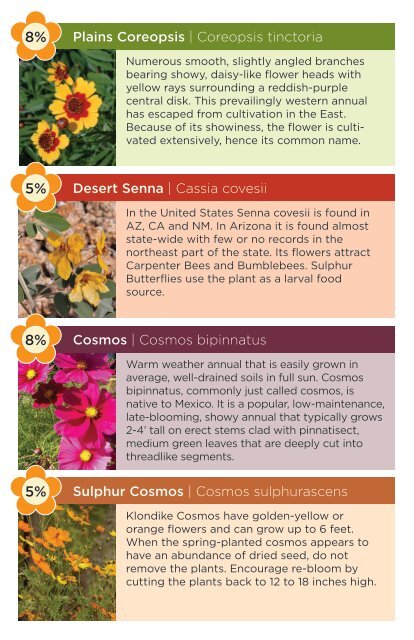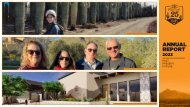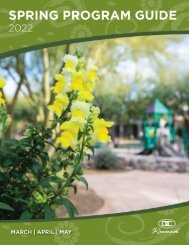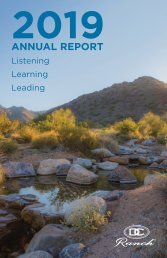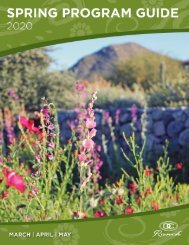Wildflower Guide
You also want an ePaper? Increase the reach of your titles
YUMPU automatically turns print PDFs into web optimized ePapers that Google loves.
8%<br />
Plains Coreopsis | Coreopsis tinctoria<br />
Numerous smooth, slightly angled branches<br />
bearing showy, daisy-like flower heads with<br />
yellow rays surrounding a reddish-purple<br />
central disk. This prevailingly western annual<br />
has escaped from cultivation in the East.<br />
Because of its showiness, the flower is cultivated<br />
extensively, hence its common name.<br />
5%<br />
Desert Senna | Cassia covesii<br />
In the United States Senna covesii is found in<br />
AZ, CA and NM. In Arizona it is found almost<br />
state-wide with few or no records in the<br />
northeast part of the state. Its flowers attract<br />
Carpenter Bees and Bumblebees. Sulphur<br />
Butterflies use the plant as a larval food<br />
source.<br />
8%<br />
Cosmos | Cosmos bipinnatus<br />
Warm weather annual that is easily grown in<br />
average, well-drained soils in full sun. Cosmos<br />
bipinnatus, commonly just called cosmos, is<br />
native to Mexico. It is a popular, low-maintenance,<br />
late-blooming, showy annual that typically grows<br />
2-4’ tall on erect stems clad with pinnatisect,<br />
medium green leaves that are deeply cut into<br />
threadlike segments.<br />
5%<br />
Sulphur Cosmos | Cosmos sulphurascens<br />
Klondike Cosmos have golden-yellow or<br />
orange flowers and can grow up to 6 feet.<br />
When the spring-planted cosmos appears to<br />
have an abundance of dried seed, do not<br />
remove the plants. Encourage re-bloom by<br />
cutting the plants back to 12 to 18 inches high.


